Steph W. from SEOPressor


...help you check your website and tell you exactly how to rank higher?


96
score %
SEO Score

Found us from search engine?
We rank high, you can too.
SEOPressor helps you to optimize your on-page SEO for higher & improved search ranking.
By vivian on July 22, 2016

“Content is king“. It’s true now when Bill Gates first stated that in 1996. Content is what drives the visitors to a website, whether it’s direct, referral, or organic traffic.
Additionally, content also creates an opportunity for marketers to transform the visitors to become customers. The key to success in content marketing is to ensure that visitors understand your message in the content so that your content will be able to convert well.
To achieve that, not only your content has to be readable by users who are looking for the answers, but Google bots too. (Read this blog post for more effective SEO copywriting tips.)
Content is powerful that it enables someone to become a thought-leader, or at the very least, a key influencer in their field. When people perceive authority, they respect it. And that respect is the foundation of a lasting relationship. The trust that readers place in a brand can pay dividends in increasing and extending customers’ lifetime value.
This means generating high-quality readable content.
In other words, marketers have to be able to deliver the content in a way that people want to read it. There are more people who are accessing the Internet using their mobile devices now compared to desktops. According to ComScore, 60% of the online traffic comes from mobiles, which is 10% more than last year.
This has proven that every website should be mobile-friendly now to stand a chance at creating results in 2020. There’s simply no point in finding out how to write content that your readers love unless you have a solid foundation to build upon.
Once you have a mobile-friendly website, users will be able to browse your site happily. With easy navigation, the compelling content becomes the jewel in the crown.
Here are some of the best and most fundamental ways to keep content engaging, diversify the types of content, and keep the users coming back for more.
The inverted pyramid is an idea that journalists have been using for decades. The pyramid suggests four layers of information, starting with the most specific details before broadening out into the most general information.
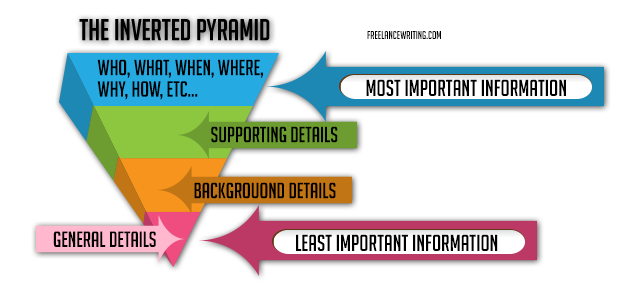
Apple is famous for starting with the question “Why?”. This is an idea that the reason behind a product is more compelling to users than the product itself, and that creating products through the pursuit of a cause is more stirring to potential customers that a simple list of features and functions (the what) would be.
When it comes to your writing, the ‘who’ should be below the surface – tailor your content for your target audience only. If your audience isn’t specific, your content wouldn’t shine. Ken Krogue, a contributor on Forbes recommended using ANUM.

You appeal not only to your own authority but also understanding the readers’ problem and finding a solution for them.
The question is: how do you know what your readers really want?
The answer lies in the searches they made in the search engines. This is because each keyword or phrase that they type in the search box carries an intent.
So, how do you identify the intent behind every keyword? Let me save you the hassle – use Keyword Intelligence
The keyword tool will analyze your keyword and show important metrics including volume, CPC, competition, value, and intent of the keyword.

For example, the keyword intent for “best cheesecake” is transactional. Which could mean the searchers are interested to find the best cheesecake and ready to make a purchase. If you are targeting this keyword, you may want to show the best cheesecake that you have together with their prices.
On the other hand, the keyword intent for “cheesecake recipes” is informational. This means the searchers are interested in looking for information rather than making any purchase. Therefore, you may want to talk about how-to guides or tips rather than showing cheesecake prices in your content.
Check your keyword intent for free here!
Once you know ‘who’ and they know why, the ‘what’ and ‘how’ can be figured out together. When you’re putting yourself on the readers’ position, there is a relationship there that can be built on. And this leads me to my next point.
Flow means readers don’t have to make a huge effort just to understand the content. Making it easy to understand means readers save energy they can use to process the details instead of fighting their way through the structure.
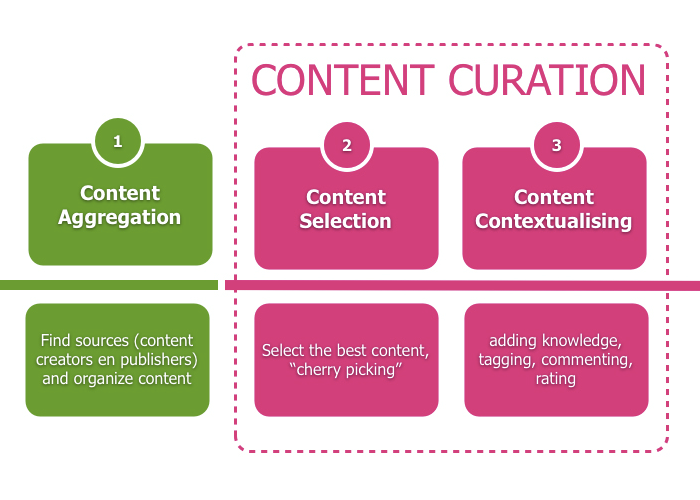
Your thoughts must flow. Each sentence must connect to the previous, and the one after it.
Without a sense of flow, you will lose your readers’ interest as well as your perceived authority. That is why flow is essential to compelling content since language was first developed.
Statistics are always seen as somehow questionable because those presenting them can define the sample size and employ whatever method they think will work best to get the desired results.
And yet, they are still present in every aspect of modern communication. That’s because no matter how suspicious people get, they still believe in numbers.
What’s more, researching numbers is difficult and often intimidating. People like to be presented with references and research because it means they don’t have to do it themselves.

 Statistics provide added value for the readers.
Statistics provide added value for the readers.It makes them feel like you care enough to convince them. If you care that much, it must be important. Even understanding statistics, however, is often difficult enough to put people off.
Discovering how to write content that presents numbers in a compelling way, whether it be through infographics, graphs, A/B testing, or narratively through case studies can help make cold numbers more accessible to general audiences.
Doing so will also make audiences feel smarter, which they will appreciate and come back more often to feel smart. This is why data visualization has become so important in content marketing.
It’s important to note that our eyes take up the most processing power in our brainS. We are primarily a visual animal.
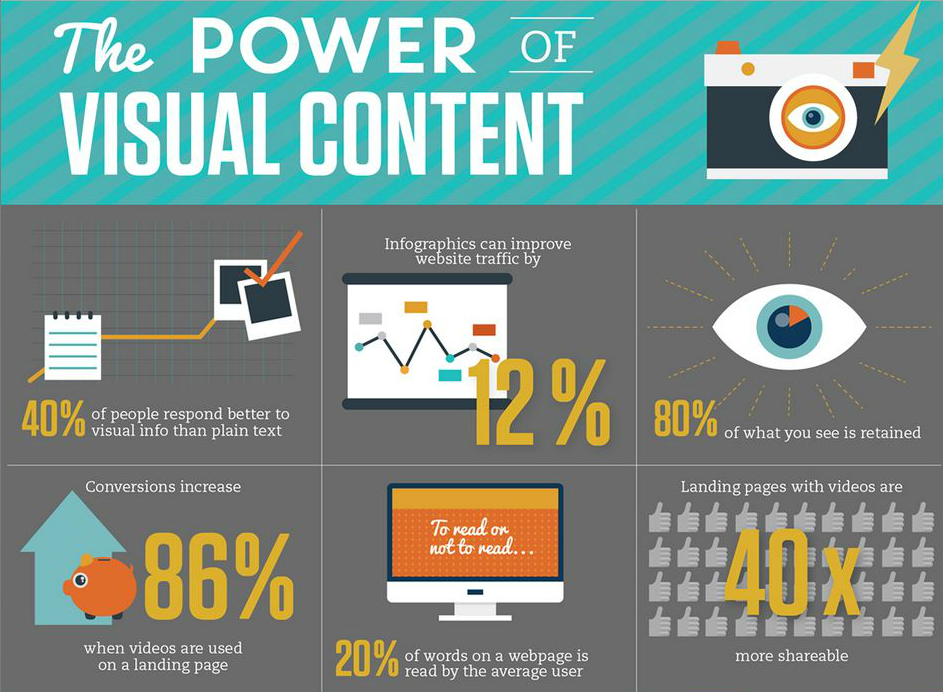
Data visualization is a booming industry that combines computing power with graphical interfacing to make complex data easy to understand.
Memes are the Internet’s most popular form of entertainment, using imagery and minimal text in juxtaposition to create comedy.
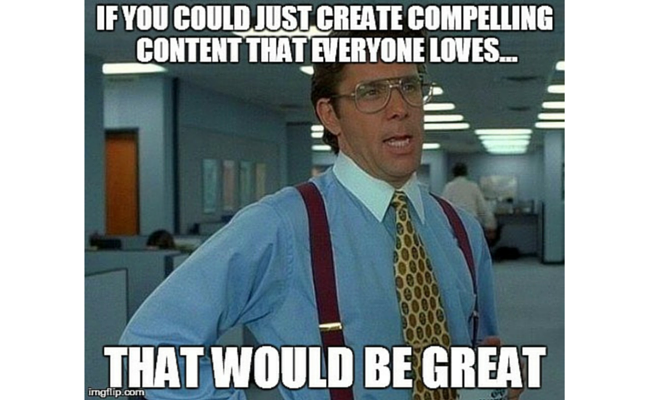
Other than memes, people also feast on visual illusions, GIFs, and tricks. Images alone can help contextualize information or simply set a mood and tone for a piece.
Infographics are the best possible way to create shareable content with high virality, subverting the normal relationship between images and text to create primarily visual arguments.
Since vision is our primary sense, moving images are the most stimulating and compelling. Video best matches a real-life experience and is the most rewarding way to experience products, services or stories. This is because the density of information naturally sits where our brain is most practiced at processing it quickly and easily.
Video does have limitations. It takes considerable time, energy, and equipment to make a good video. It’s also being hobbled by cell service carriers and their relative data allowances. Once this hurdle is overcome, however, the video will explode. It’s already increased by 400% in two years.
Despite this, the Click-Through Rate (CTR) is also the highest of any advertising format using video, at 1.84%. Based on Alexa, YouTube is now bigger than Facebook.
Videos already one of the most popular formats online, so you’d be a fool not to take advantage of it.
Dynamic text and hand-drawn animations are popular ways to cut down on production expenses while still creating maximum impact.
When you’re writing online content, it’s essential that you:
Using these techniques breaks down the content into more bite-size chunks. It makes the content easier to scan, which means better conversion rates.
You can use these techniques for different types of content marketing. For example:
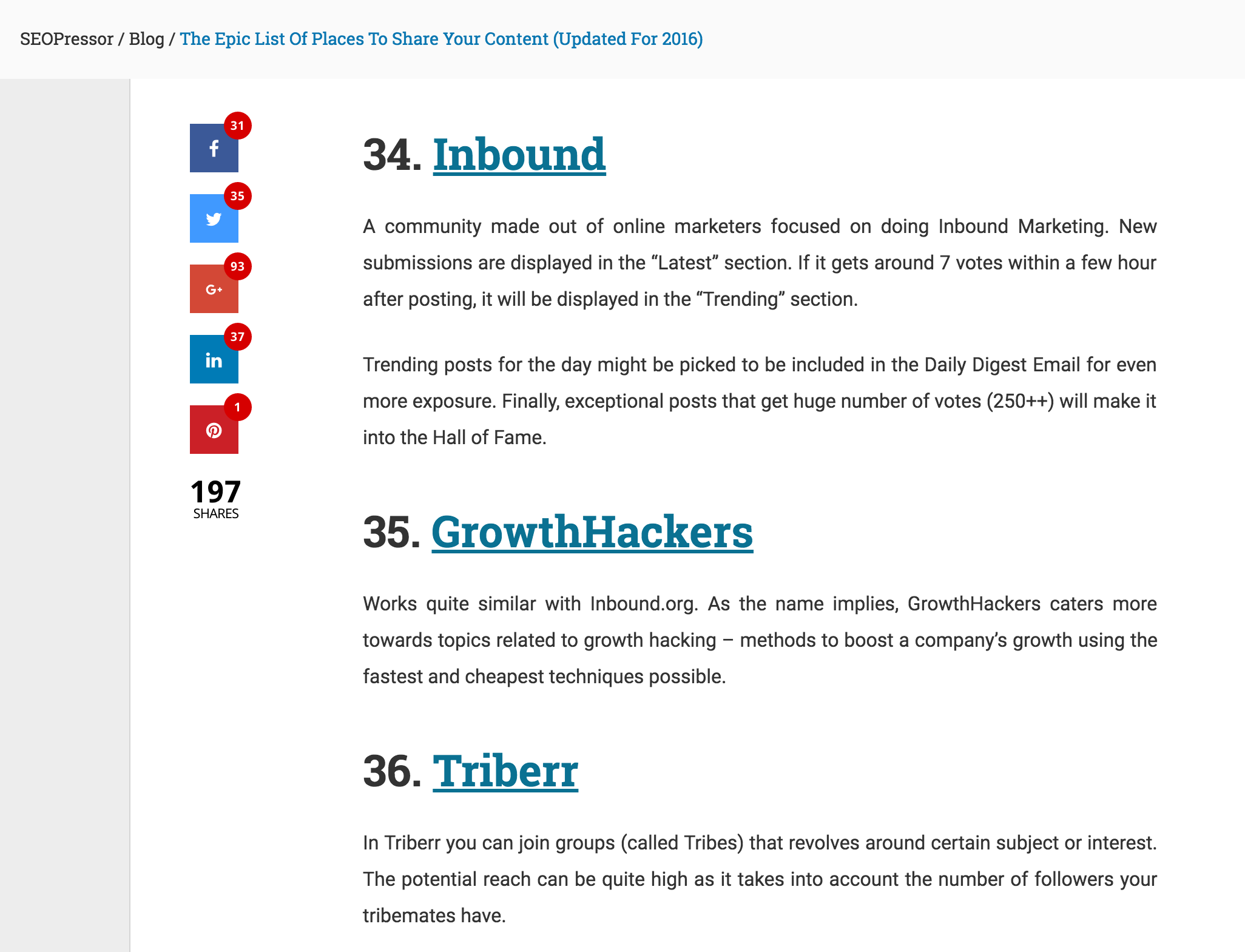
List articles help set expectations for readers and provide an easy format for ready scanning. You might not even read this paragraph because you know how to format it well, but you might really care about number 7.
Bonus tip: Check your content readability using BiQ’s Content Intelligence.
Improving your content readability will help to increase the chance that your audience will read and interact with your content.

Other than readability, the free tool will also show you the paragraph’s relevancy and sentiment.
Use these insights to get to know more about how your audience will react to the content that you already published.
Check your content readability for free now!
According to CopyPress, the average length of top-performing blog posts is 2,416 words. Anything over 1,200 increased leads relative to those 500 words or less. This is because long-form content offers more value to readers. It’s almost impossible to give people a thorough, well researched, and valuable insight in just 500 words. That’s barely an introduction.
Short form means potential customers have finished the article by the time they have just gotten truly engaged. It also means they’ll likely be disappointed by the lack of rigor and respect you less as a result.
But what topic could possibly sustain that kind of word count? Here are a few:
While it’s a bit of an investment to create a whole book (we recommend 50-100 pages) and then give it away for free. This is an effective way to collect email addresses, demonstrate unquestionable authority in your niche, and advertise your products and services all in one. Just make sure it has a good title.
Like how to create better content. It’s important to understand the user’s intent when writing how-to guides because readers are looking for answers. Therefore, as content marketers, we have to provide answers to their questions.
Reviewing products can help you stay ahead of the competition, find more opportunities to exploit gaps in the market, and establish your authority and leadership in the process.
The most powerful tool since the dawn of civilization. Never be afraid to tell a story on your site that means something to the business, and has direct implications for the customer.
Creating a series is a great way to get audiences coming back for more. If you can be disciplined enough to post at the same time every week, you’ll have a habit-forming tool that will see people habitually return, massively increasing their CLV. The fact we didn’t split this into a series to milk this much useful information for more traffic is doing you a favor.
Create teaser images out of infographics that promise a fuller explanation in an accompanying blog post. This helps get the best of both worlds, with an easily sharable face and an in-depth body.
Make it an inspiring “success story” of what you have tested. Share your findings to drive traffic, build trust, and establish authority.
Facebook Live is a new tool available to anyone with a mobile phone to broadcast what they’re doing right now. It is designed to help people create an instant, live connection, and have been used to great effect by people like George Takei.
But webinars have already been running successfully for years, using the same basic format. Going live and delivering a prepared presentation on a topic is a perfect opportunity to build a personal brand, as well that of the business, and to create a real human connection to customers. If you are brave enough to put yourself out there and answer questions, the rewards can be huge.
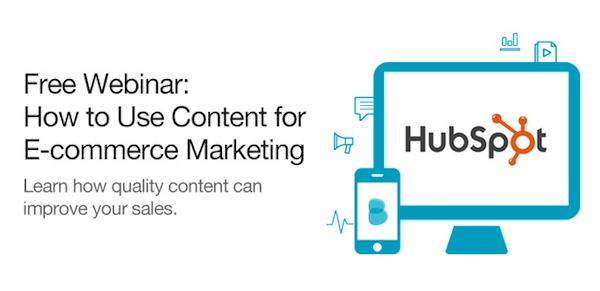
If you’re not sure you’re in a position to teach people something new in a live environment, host an interview with a guest expert to take the pressure off yourself.
The Internet allows one expert to take on thousands of virtual apprentices. You become the portal, the gatekeeper to the knowledge, and people will appreciate you almost as much for that.
The Internet is so full of content that this kind of curating is become more popular, and more valued, as it helps people cut through the rubbish out there and get straight to the most valuable insights.
Azfar wrote about controversy marketing recently, and pointed out Ahref’s SEO Is Dead Research. By doing research and seeing the obvious implications, then presenting those implications, you can generate a huge amount of energy in the discussion.
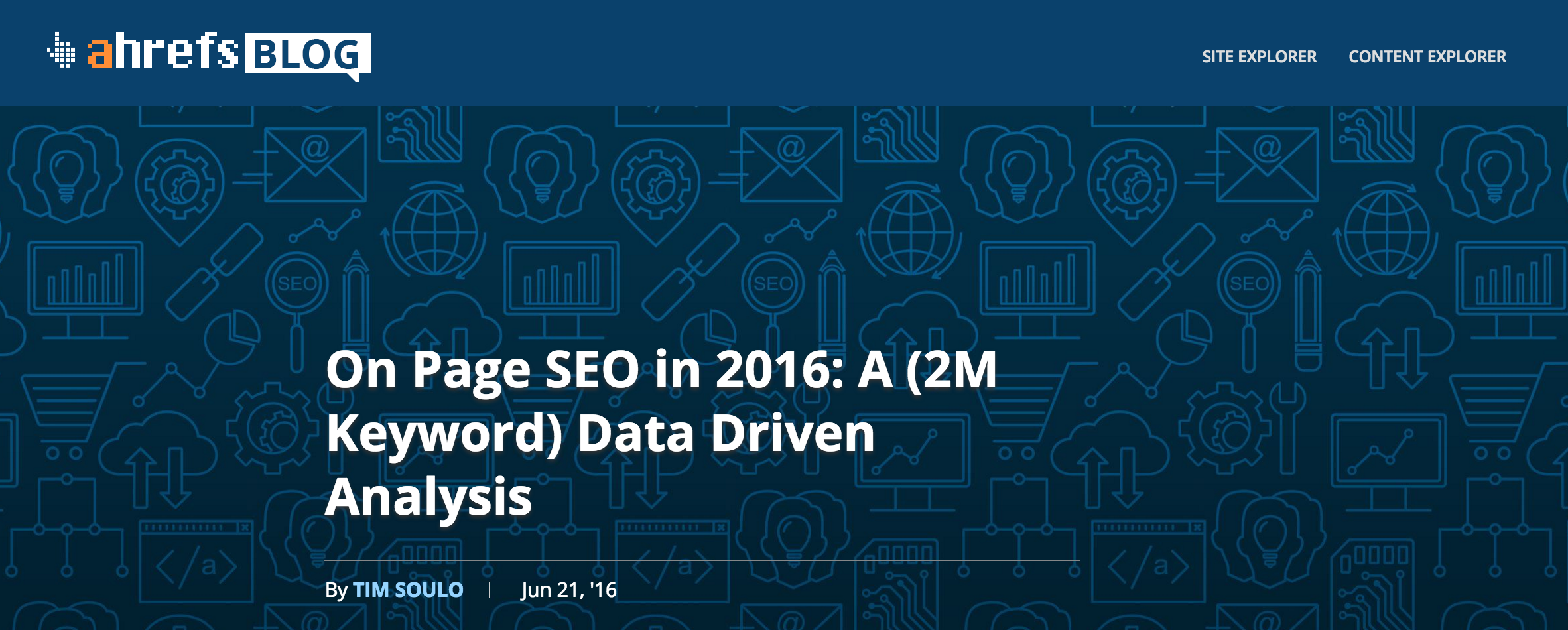
Using your blog post as a challenge to readers will entice them to engage, and as long as you play it correctly, you can dissociate yourself from the findings (presenting them as facts and not your own opinions).
Alternatively, if you want to cultivate tribalism (like what I talked about in my emoji marketing blog post), you can write a strong opinion piece and stick to it, identifying your audience by those who agree with that opinion. By rewarding their preconceived notions with a piece that expresses for them what they were always trying to say, you will build loyalty and kinship.
People have different preferences for how they like to absorb content. Some love video, some like still images, and some even now still like to read.
Everybody wants a different hook, and that might change depending on the time of day, or their mood, or the device they’re using. As such, diversifying the types of content you have available on your site will increase your chances of attracting more people, more of the time.
Understanding how readers learn will help you find the most effective types of content marketing and help your brand’s story to resonate. Find out what’s trending, and link your product into that. Communicate directly with readers by asking for their opinions.
Is there anything we’ve missed? Do you know something we don’t about successfully diversifying and delivering high-quality content? Let us know in the comments below.
Updated: 9 December 2025


Save thousands of dollars (it’s 100x cheaper)

Zero risk of Google penalty (it’s Google-approved)

Boost your rankings (proven by case studies)
Rank High With This Link Strategy
Precise, Simplified, Fast Internal Linking.
